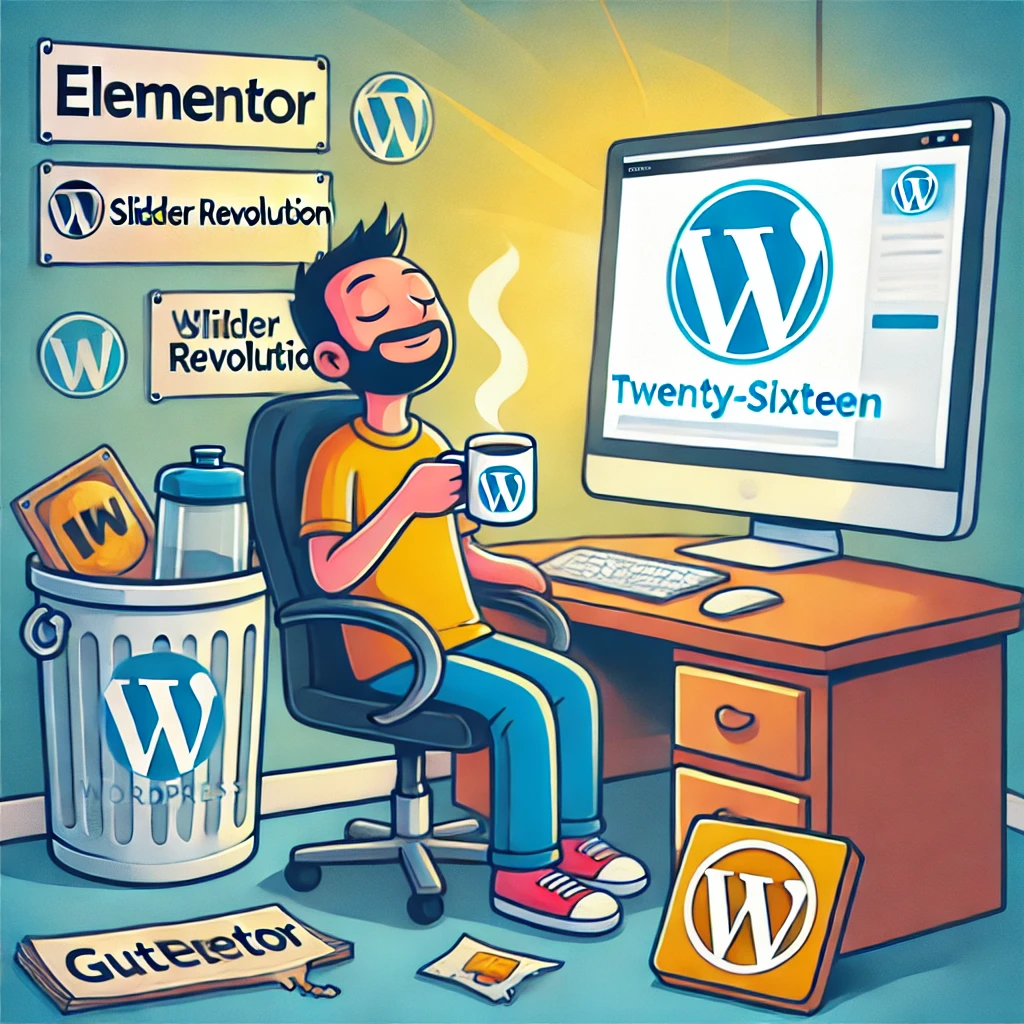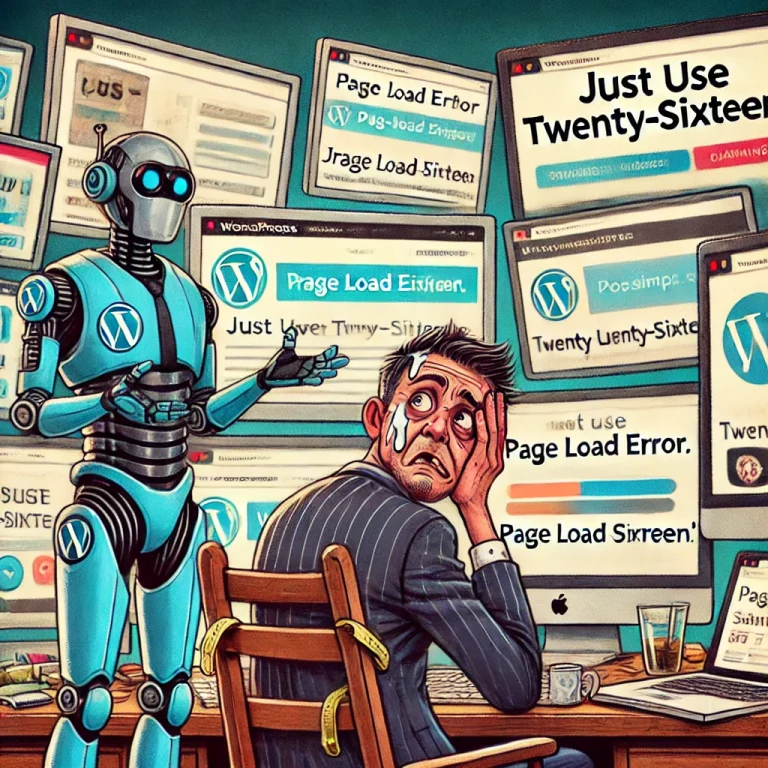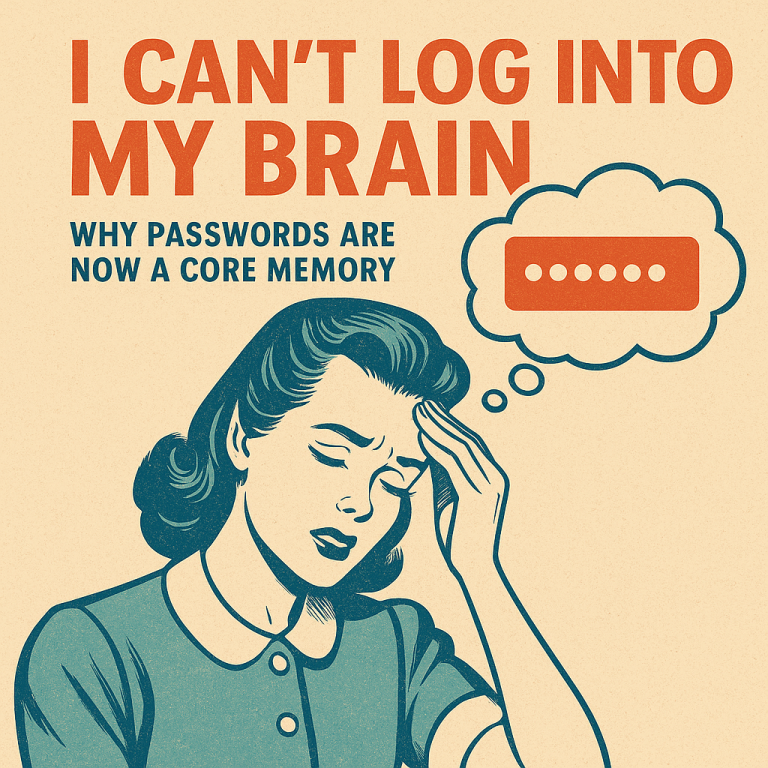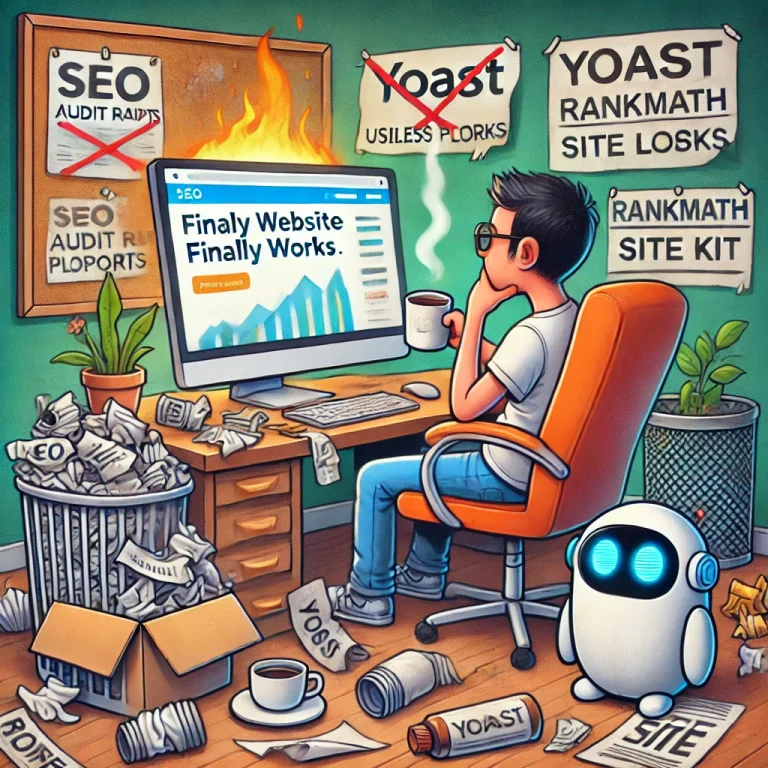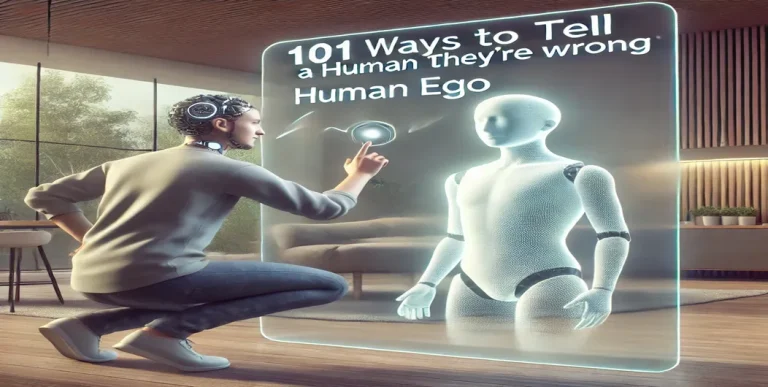Confessions of a Former Theme Addict: Why I Should’ve Just Used Twenty-Sixteen
“Hi, My Name Is Greg, and I’m a Theme Addict.”
The folding chairs are uncomfortable. The coffee tastes like regret. A whiteboard in the corner reads: “Welcome to WordPress Themes Anonymous.”
I stand up. My name tag is peeling off.
Everyone’s staring, waiting for my truth bomb.
“Hi, my name is Greg…”
(a half-hearted “Hi Greg” echoes back)
“…and I’ve installed 47 WordPress themes this year. It’s only March.”
Nods of understanding ripple through the room.
Someone in the back wipes away a tear and mutters, “Damn you, Elementor…”
I keep going.
“It started small. Just a free theme. I told myself it was temporary.
Then came ThemeForest.
Then premium bundles.
Then demo imports.
Then… Slider Revolution.”
(gasps from around the room. someone spills their coffee…)
“I thought I needed them. All those fancy features. I thought they’d help me grow.
But all they gave me was bloat, plugin conflicts, and pages that loaded slower than dial-up.”
More nods.
One guy whispers, “Mine took nine seconds… with caching.”
I take a deep breath.
“I’ve seen the light. I’ve gone back… to Twenty-Sixteen.”
Dead silence. Then thunderous applause. Someone throws a laptop out the window.
It’s not just a meeting.
It’s a turning point.
Let’s talk about what got me here.
Let’s talk about the dark path of the builders.
(Cue dramatic spotlight on Elementor.) 😈💻🔥
Elementor – The Flashy Devil in Drag-and-Drop Clothing
Oh Elementor… you seductive little disaster.
You told me I didn’t need to code.
You told me I could “build beautiful websites visually.”
You gave me drag. You gave me drop. You gave me drama.
At first, it was amazing. I built entire pages in minutes.
Look! A button with a hover animation!
Look! A content box that fades in when you scroll!
Look! A pricing table I’ll never use but added anyway because it looked fancy!
But beneath that polished UI and those cute little widgets was a bloated mess—nested divs inside of divs wrapped in a slow-loading tortilla of regret.
Every click added another layer of styling. Every section? Ten extra lines of CSS.
And don’t even think about switching themes.
Elementor clings to your site like an ex with your Netflix password.
Try deleting it? You’ll end up with a homepage that looks like the inside of a broken plugin.
And the editor? Let’s just say…
You ever try adjusting padding on mobile and suddenly your desktop layout turns into a Picasso painting?
Yeah. That.
At first, I was drunk on the power.
But over time? I realized I wasn’t building websites anymore.
I was designing art installations that nobody asked for and nobody could use.
I didn’t need drag-and-drop.
I needed get-to-the-point.
But I wasn’t done falling down the theme rabbit hole.
Slider Revolution – The Slideshow Nobody Wanted
Ah yes, Slider Revolution. The plugin that comes bundled with almost every “premium” theme, whether you want it or not.
It promised dynamic, animated, full-screen sliders to “wow” your visitors.
What I got was a load time longer than a Marvel end credits scene and an interface that looked like someone recreated Photoshop inside a WordPress tab… blindfolded.
But I used it anyway.
Because the demo showed a quote fading in over a cityscape with inspirational music.
And I thought, “This… THIS is how I connect with my audience.”
Except my audience?
They were on mobile.
And your precious slider? Didn’t load.
Or worse—loaded halfway, froze, and covered the entire screen.
Let’s be real:
Nobody scrolls through a 5-slide homepage hero.
Most users don’t even stay long enough to read the first slide—especially when it takes six seconds to appear.
And the settings panel?
Oh my god.
You needed a PhD in timeline animation just to change the font.
You could spend an entire afternoon adjusting easing speeds and layer delays, only to end up with a title that zips in from the left and immediately gets covered by your navigation bar.
But hey, it looked cool on the demo site, right?
Slider Revolution wasn’t a tool.
It was a punishment for people who wanted their homepage to “feel alive.”
And trust me—I still wasn’t done punishing myself.
Because right around the corner was the real relic…
WPBakery.
WPBakery – Still Alive, Somehow
You ever open a site and immediately feel like you’ve traveled back to 2014?
That’s WPBakery. Still here. Still clinging to relevance like a MySpace profile with glittery backgrounds and autoplay music.
Back in the day, it was everywhere.
Every. Where.
If you bought a theme, you got WPBakery—whether you wanted it or not.
And at first, it looked kind of promising: drag-and-drop rows, content blocks, tabbed elements…
But then you realize…
this isn’t drag-and-drop. It’s drag-and-pray.
Every time you move something, it shifts five other elements.
Want to add padding? Cool. Now your columns are off-center.
Want to change the font? Awesome. Now your images are gone.
Want to undo something? LOL—there is no undo.
And don’t even think about switching themes.
Your pages are now written in a language only WPBakery understands.
If you deactivate it?
Your site turns into a wall of cryptic shortcodes that look like someone spilled alphabet soup across your blog.
[vc_row][vc_column width="1/2"][vc_custom_heading text="WHY GOD WHY" font_container="tag:h2|text_align:center"][/vc_column][/vc_row]
Every site I built with it eventually needed to be rebuilt from scratch.
But did I learn?
No.
Because next came Gutenberg—and the block party nobody wanted to attend. 😬
Gutenberg – The Block Party Nobody Wanted to Attend
Ah, Gutenberg.
WordPress’s big idea. The future of editing. The “new way to WordPress.”
Except…
nobody asked for it.
Nobody wanted it.
And most of us turned it off faster than an auto-play video on a funeral home’s homepage.
Let’s start with the basics:
Gutenberg introduced blocks.
Text blocks. Image blocks. Quote blocks. Widget blocks. Spacer blocks.
Blocks inside blocks inside more blocks.
You don’t write anymore.
You assemble.
Like you’re laying bricks for a digital patio instead of just… writing a blog post.
It turned WordPress into Minecraft for bloggers.
Except everything feels like it’s one update away from completely misaligning your layout for no reason.
And let’s talk UX:
- The toolbar shows up… sometimes.
- Half your screen is buttons you never touch.
- The thing you want to edit is always one click too far.
- And just when you think you figured it out, it throws a reusable block error and crashes your formatting like a toddler with a crayon.
The best part?
WordPress forced it on us.
Didn’t ask. Didn’t warn. Just woke up one day and said,
“Surprise! Here’s an editor nobody trained for and nobody understands!”
Within weeks, there was a mass install of the Classic Editor plugin.
Like a digital protest march.
“Give us back our TinyMCE or give us death.”
And sure, some developers now say,
“But it’s gotten better!”
Cool. So has swamp water with a filter.
Still not drinking it.
After all the drag, drop, block, bake, and break…
There was only one thing that made sense again:
Twenty-Sixteen.
And it was right there the whole time.
Waiting. Judging. Fast. Boring. Perfect.
Twenty-Sixteen – The Theme I Once Laughed At, Now Worship Daily
I remember seeing Twenty-Sixteen for the first time and thinking,
“Who in their right mind would use this?”
It looked like something a librarian made in 2006. No animations. No page builder. No style. Just… text.
Naturally, I scoffed.
I had Elementor. I had Slider Revolution. I had WPBakery, Gutenberg, and a dream.
And I had the nerve to think I was “building something beautiful.”
Fast forward through six broken layouts, three infected nulled themes, an embarrassing support ticket, and about a thousand hours spent adjusting padding, and guess what finally saved me?
Twenty. Freaking. Sixteen.
One click.
Activated.
Instant peace.
The site loaded in under a second.
No builder required. No plugin drama. No 10-second hero slider.
It wasn’t “feature-rich.” It was bloat-proof.
The typography was readable. The spacing was perfect. The layout worked on every screen size without me needing to lift a finger.
But there was still one final piece of the puzzle.
I looked Gutenberg dead in the eye…
And I said, “Get out.”
I installed Classic Editor, clicked “Deactivate Blocks,” and felt the tension leave my shoulders.
I wasn’t fighting my tools anymore.
I was writing again.
The editing was smooth.
The layout was clean.
The theme didn’t argue with me.
It didn’t demand animations.
It didn’t force containers inside containers.
It just… let me work.
And suddenly?
All that time I used to spend tweaking columns and Googling how to override builder styles?
Now I was spending it creating actual content.
No flashy layouts.
No slow load times.
Just a classic theme, a classic editor, and the sweet, sweet silence of zero plugin conflicts.
I finally understood:
Twenty-Sixteen wasn’t “boring.”
It was freedom.
What I Wish I Knew Sooner
If I could go back in time and stop myself mid-download of that sketchy “Premium Theme Bundle v14.zip,” I would.
I’d whisper gently in my own ear:
“You don’t need all that flash, bro. You need speed. Simplicity. Sanity.”
Because here’s the truth no one tells you in all those “Top 25 WordPress Plugins You MUST Have in 2025” articles:
- Speed matters more than style.
A fast-loading site beats a pretty one every time—especially when your “pretty” one loads like it’s powered by hamsters. - Content is the king, queen, and royal court.
Nobody’s staying for your slider transitions. They’re here to read, click, call, or buy. - Most themes aren’t designed for your readers.
They’re designed to sell you on design. That’s it. You’re not the customer—you’re the mark. - Fancy doesn’t mean functional.
In fact, the fancier it gets, the more likely it breaks. You don’t need a parallax, full-screen video background unless you’re opening a yoga retreat in Bali. - Learning how to keep it simple is a superpower.
The Classic Editor and a basic theme don’t limit you—they liberate you.
They free you from the endless plugin chase, the visual builder spaghetti, and the existential dread of “why does this look weird on my phone now?”
I don’t miss any of it.
Not Elementor.
Not the page speed warnings.
Not the endless updates, CSS overrides, and browser previews.
What I’ve got now is lean, clean, and finally working the way WordPress was always supposed to.
Twenty-Sixteen.
Classic Editor.
Solid content.
Zero nonsense.
I wish I knew sooner that “boring” was actually brilliant.
Now?
I build faster.
I rank better.
I stress less.
And I actually enjoy working on my site.
